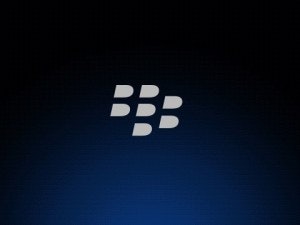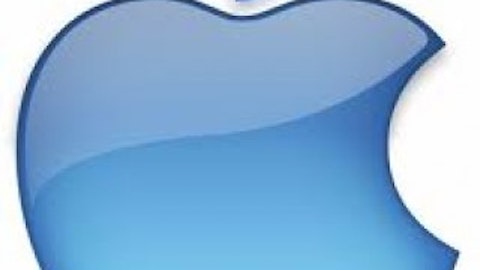In 2009, when Research In Motion Ltd (NASDAQ:BBRY) launched its ‘BlackBerry boys’ campaign and lowered the price of the entry level Curve model, the younger generation became addicted to BlackBerry Messenger, a free substitute to SMS. It saw a loyal customer base, sales zoomed up, share prices soared but little did the company know this success would be short lived.

The down-side
Blackberry’s major chunk of revenue came from the enterprise market, and focusing on consumers was a big risk in the past. Then came the phase where people started to keep just one phone – both for business and personal purpose. That was the point where Research In Motion Ltd (NASDAQ:BBRY) failed to make the paradigm shift. Whatsapp the social media app and Skype the video calling service, unlike Blackberry Messenger, worked in all platforms including Android, iPhone and Microsoft. It made Research In Motion Ltd (NASDAQ:BBRY) less appealing to the youth as BBM lost its uniqueness, but this was just the tip of the iceberg.
Research In Motion Ltd (NASDAQ:BBRY) has not released a new phone in a long time in the middle and lower segment, whereas technological breakthroughs from Samsung and Apple Inc. (NASDAQ:AAPL) changed the face of the war-zone forever. Research In Motion Ltd (NASDAQ:BBRY) was nowhere from the stiff competition of the S2, S3 and the iPhones. Older models, like Curve, have literally dropped off the sales chart.
As a result, in the recent earnings release, BlackBerry reported a 76 million subscriber’s base – a 3 million loss from last quarter. Handset shipments also declined 46% year-over-year to 6 million. Revenue fell $2.68 billion from $4.19 billion a year ago primarily due to the decreasing revenue in America.
The smartphone industry
There are a plethora of companies waiting to get a slice of this lucrative market as smartphone shipments are expected to reach 900 million units in 2013. BlackBerry, which once accounted for 42.6% of the total US Smartphone base, is now just a marginal player in the industry.
| % share of Smartphone subscribers | ||
|---|---|---|
| Company | Mar-13 | Dec-12 |
| 52.0% | 53.4% | |
| Apple | 39.0% | 36.3% |
| Blackberry | 5.2% | 6.4% |
| Microsoft | 3.0% | 2.9% |
| Symbian | 0.5% | 0.6% |
(Source:
ComScore)
Google leads on the software, whereas Apple Inc. (NASDAQ:AAPL) leads on the hardware. Research In Motion Ltd (NASDAQ:BBRY) and Microsoft are now fighting hard for the number three spot.
The turn-around strategy
The launch of BlackBerry 10 turned the tables for the company. It saw more than lukewarm response in Europe and Canada, but its US debut was weak. It shipped 6 million smartphones during the quarter including 1 million BB10 units and excluding its sales in the US. The launch of Z10 and Q10 in the premium sector might not be very strong, but the company is showing positive signs that can be seen in the company’s gross margin. It reported a gross margin of 40.1% in Q4 2013 vs. 30.4% in Q3.

Z10 is offered by 89% of the carriers in Canada, Europe and the US. It has further plans to upgrade its distribution channel to accommodate more carriers and increase its marketing expenditure by more than 50% in the coming year to increase penetration in the upcoming markets.
With the change in the company structure, the working capital management has also improved as seen by the 2 million reduction in channel inventory. The company is positive on achieving higher revenue per subscriber than its competitors with the launch of BB10. BlackBerry tablets and smartphones along with Samsung have also been cleared for use on the Defense Department network. This adds the icing on the cake.
Although it has shown impressive resilience, there is a long way to go. The company can adopt further measures to strengthen its profitability.
Future outlook
BlackBerry needs to focus more on emerging markets like China and India where the smartphone growth rate is slow due to their exorbitant pricing, and the new players like Micromax and ZTE are gaining popularity due to their value pricing. This means that it will have to come up with new products in the mid-range segment. It can either lower the price of its BB10 or continue with its BB7, which is still popular in the emerging markets. The introduction of the new lower priced BB10 Q5 model in the European and Asian markets could replace the budget phone Curve to add millions to its revenue.
The recent announcement of rate cuts in monthly tariffs of Tier II cities of India might just be the spark necessary to gain an EDGE over others. Normally BlackBerry, which charges INR 399 ($7.30) for a monthly internet connection will now be charging INR 129 ($ 2.40) for the same pack in low income generating circles. It will appeal to more customers as the consumers in India are price conscious. This move tagged with the new product launch could be the game changer in India.
Furthermore, the applications library needs to be extended as BlackBerry lacks on the number of apps compared to Android or iOS. Popular photo app like Instagram and video calling app Viber could be brought in here. BBM (60 million users) if ported to other platforms could work wonders for the company as other devices will also be able to access Blackberry’s infrastructure. The much awaited voice and video call version can quickly replace Skype (280 million), Chat-on etc.
Concluding thought
Blackberry’s stock price has soared to a great extent after it released BB10. It needs to keep on delivering new models in the upcoming markets like China and India. Although the investors should not turn a blind eye to the challenges faced by the company in order to survive; BlackBerry, like the Phoenix of Greek mythology, may yet again rise from its own ashes.
The article The Phoenix of the Smartphone industry originally appeared on Fool.com.
Eshna De has no position in any stocks mentioned. The Motley Fool recommends Apple. The Motley Fool owns shares of Apple. Eshna is a member of The Motley Fool Blog Network — entries represent the personal opinion of the blogger and are not formally edited.
Copyright © 1995 – 2013 The Motley Fool, LLC. All rights reserved. The Motley Fool has a disclosure policy.
